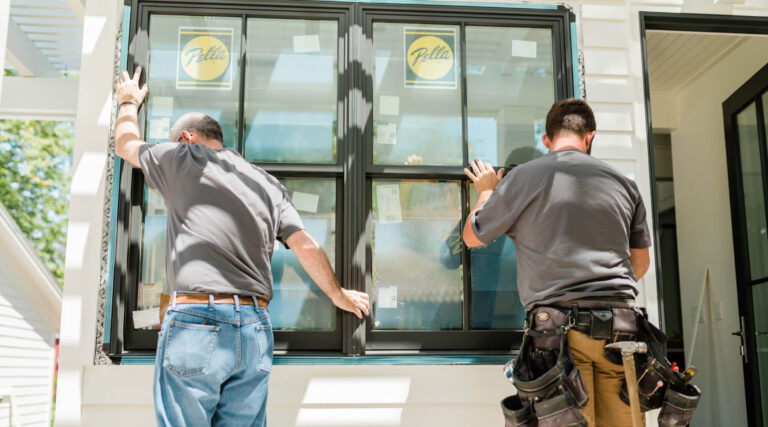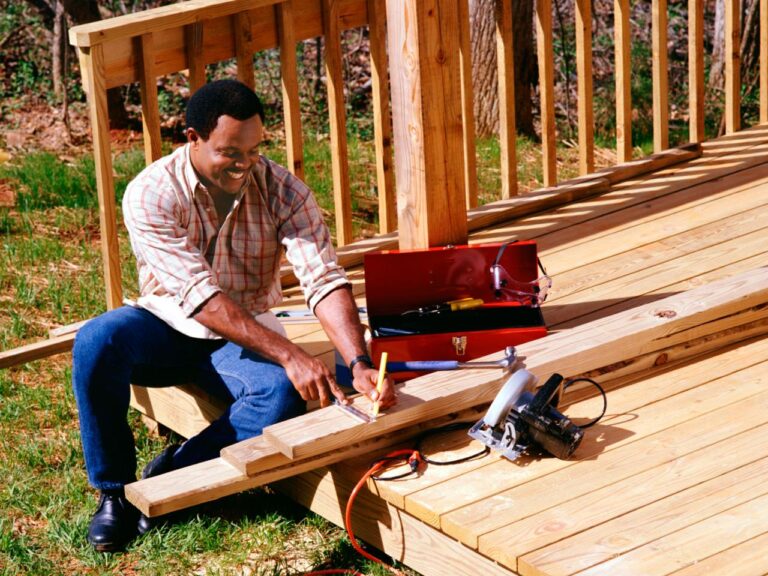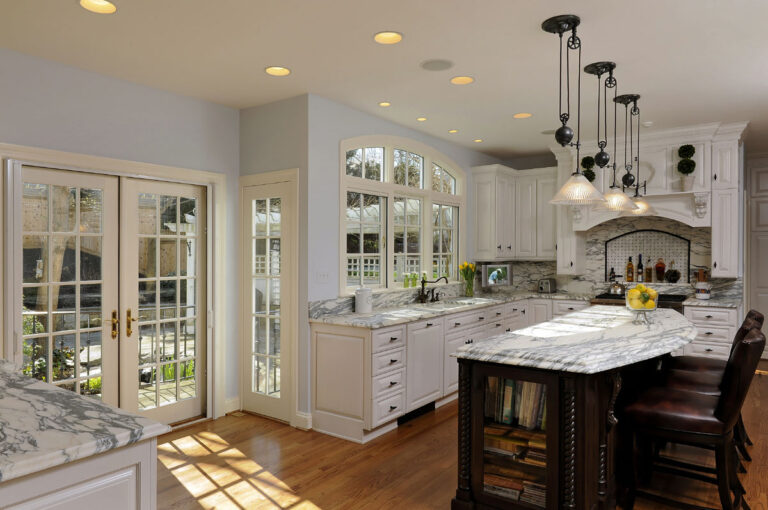7 Best Software Tools For Home Automation Specialists
Home automation specialists are constantly seeking the best tools to enhance and simplify their work. As technology advances, these tools become more sophisticated, offering numerous features that make managing smart homes easier and more efficient. What are the top software solutions that can meet the needs of professionals in this field?
In this article, we will explore several software options available to home automation specialists. These tools offer a range of functionalities, from controlling lighting and security systems to managing energy consumption and integrating with various smart devices. Each software discussed will cater to different preferences and technical requirements, providing valuable insights to help specialists choose the right tools for their projects.
1) SmartThings
SmartThings is a versatile home automation platform offered by Samsung. It supports a variety of smart devices, including Zigbee and Z-Wave products. This makes it a great choice for users looking for compatibility across different brands.
One of the key features of SmartThings is its ability to create custom automations. Users can set up routines that trigger based on time, location, or device status. This flexibility allows for a personalized smart home experience.
The SmartThings hub is central to its ecosystem. It connects various smart devices and manages communications between them. This hub can be controlled through the SmartThings app, available on both Android and iOS.
For those interested in integrating multiple devices, SmartThings supports popular smart products like WiZ light bulbs, TP-Link Kasa light strips, and MyQ garage door openers. This wide range of compatibility makes it a robust choice for home automation enthusiasts.
SmartThings also offers compatibility with major voice assistants. Users can control their smart home using Amazon Alexa, Google Assistant, and Samsung’s own Bixby. This adds an extra layer of convenience and accessibility.
For advanced users, SmartThings provides an API to create custom scripts and integrations. This can be particularly useful for those who want to build more complex automations and controls.
When considering software options, it’s worth noting that SmartThings has many alternatives, including open-source options like Home Assistant. These alternatives might be suitable for those prioritizing privacy and local control.
In conclusion, SmartThings is a comprehensive and flexible platform for home automation, suitable for both beginners and advanced users. It offers extensive compatibility and a range of features that cater to a variety of needs.
2) Hubitat Elevation
Hubitat Elevation is a home automation hub that focuses on local control. This means it doesn’t depend on a cloud connection, resulting in faster and more reliable performance. It’s a versatile platform supporting common automation protocols like Zigbee, Z-Wave, and Lutron.
One of its standout features is the Rule Machine, which allows users to create customized automation rules. This makes it easier to design personalized home environments. Built-in applications further simplify the automation process.
Hubitat Elevation is compatible with several smart home platforms, including Alexa, Google Home, and Apple HomeKit. This wide compatibility means users can integrate a variety of devices into their home automation system.
Unlike some other hubs, Hubitat Elevation prioritizes privacy and security. Since it operates locally, your data stays within your home network. This reduces the risk of data breaches and enhances peace of mind.
For those who are new to home automation, Hubitat offers good support for beginners. It provides guidelines on using compatible devices and sensors, making setup straightforward. Users are not required to automate their entire home, allowing for flexibility.
The latest software updates for Hubitat Elevation add even more features and improvements. These updates often include new functions and enhanced performance, keeping the system up-to-date and efficient.
Overall, Hubitat Elevation is a solid choice for those looking to manage their home automation locally without sacrificing features or compatibility. It offers a balanced mix of advanced capabilities and ease of use.
Learn more about Hubitat Elevation’s home automation features and the latest software upgrades.
3) Lutron Caseta
Lutron Caseta is a popular choice for home automation specialists due to its reliability and versatility. It offers a range of smart dimmers, switches, and plugs suitable for both indoor and outdoor use.
One of the standout features of Lutron Caseta is its easy integration with other smart home systems. It works seamlessly with major platforms such as Apple HomeKit, Amazon Alexa, and Google Assistant.
A key benefit is the support for Pico button events via LEAP. This allows for greater control and customization of home lighting settings.
The cost of Lutron Caseta’s smart switches typically ranges from $60 to $70 per switch. The low-voltage dimmers are more expensive, costing around $120 per switch, reflecting their advanced capabilities. Despite the higher price, many users find the investment worthwhile.
Lutron Caseta also offers robust security features. Their high-end Athena systems have phased out telnet support due to security concerns, enhancing the safety of home automation networks. This proactive approach makes it a trustworthy option for those concerned about privacy.
Additionally, specialists can add a smart hub for enhanced control of lights, thermostats, window shades, and even music systems like Sonos. This makes Lutron Caseta a comprehensive solution for smart home management.
For those interested in more detailed insights, the Caseta by Lutron website provides extensive information on their smart lighting control systems.
4) Nest Thermostat
Nest Thermostat is a popular tool for home automation specialists. It helps control the heating and cooling systems more efficiently. Users can adjust the temperature using their smartphones, making it very convenient.
The Nest Thermostat can learn the user’s schedule. Over time, it adjusts the temperature settings automatically to suit their habits. This learning capability can save energy and reduce utility bills.
Integration with Home Assistant is another key feature. This allows advanced automation using various conditions like occupancy, time of day, and outdoor temperature. You can learn more about integrating Nest Thermostat with Home Assistant here.
The thermostat also sends alerts if there are issues with the heating or cooling systems. This proactive feature helps in maintaining the system and preventing bigger problems. It’s a useful feature for ensuring that everything runs smoothly.
Setting up smart home automations with Nest Thermostat is simple. Users need to configure their Google Nest products in the Home app on their smartphones. Further details on setting up Nest smart home automations can be found here.
For those new to home automation, Nest Thermostat is a good starting point. It’s easy to use, offers advanced features, and integrates well with other home automation tools. The customizable options make it flexible for various needs. Interested users can find a guide on automating their home with a Nest Thermostat here.
5) Philips Hue
Philips Hue is one of the leading smart lighting solutions available today. It allows users to control lights through a smartphone app, making home lighting more flexible and convenient.
One standout feature is the ability to customize scenes, allowing users to create specific moods and atmospheres for different parts of the day. The app offers a wide range of color options to choose from, providing a unique way to personalize a space.
The system also supports automation. Users can set up routines where lights turn on or off at specific times, enhancing daily routines. For instance, you can automate a wake-up routine where lights gradually brighten, simulating a sunrise.
Philips Hue integrates well with other smart home systems. It works seamlessly with platforms like Amazon Alexa, Google Assistant, and Apple HomeKit. This makes it easy to control and integrate with other smart home devices.
There are also various additional apps designed to expand the capabilities of Philips Hue. QuickHue, for instance, allows users to control their lights directly from the pull-down Quick Settings menu on Android devices.
Moreover, Philips Hue adapts to different needs, whether for security, ambiance, or convenience. By connecting with systems like Home Assistant, it offers a comprehensive solution for full home automation.
Philips recently released an updated Hue app, making automation even easier. Users can now quickly set up and manage their smart lighting configurations with improved features and user interface enhancements.
In summary, Philips Hue provides a versatile and reliable option for controlling home lighting. Whether for simple on/off commands or complex routines, Philips Hue makes smart lighting accessible and manageable.
6) August Smart Lock
The August Smart Lock is a top choice for home automation specialists. It offers keyless entry, making it easy to manage access without physical keys. Users can lock and unlock their doors remotely, providing added convenience and security.
One of the standout features is its excellent connectivity. The lock uses Bluetooth, GPS, and WiFi, along with the August mobile app, allowing users to control their doors from anywhere. This integration is perfect for those who want to monitor their home while away.
August Smart Locks are compatible with various AI virtual assistants, such as Amazon Alexa, Apple HomeKit, and Google Assistant. This allows users to use voice commands to control their lock, enhancing the ease of use in a smart home setup.
DoorSense technology is another highlight. It can tell if your door is securely closed and locked, giving you peace of mind. The auto-lock and auto-unlock features are especially useful, automatically securing your door when you leave and unlocking it when you approach.
For families with kids or frequent visitors, the August Smart Lock + Keypad combination is a great option. The keypad allows for the creation of temporary codes, so you can easily grant access to others without needing a physical key.
The August Smart Lock also integrates with Samsung SmartThings, expanding its functionality further. This allows it to sync with other smart home devices, creating a seamless and interconnected home automation experience.
For more details, check out the PCMag review of the August Wi-Fi Smart Lock. Additionally, August’s blog provides insights on how auto-unlock works, helping users make the most of this feature.
7) Arlo Pro 3
The Arlo Pro 3 is a strong contender for home automation specialists seeking a reliable security camera. This system offers stunning 2K video quality, making it easy to identify faces and details.
One notable feature of the Arlo Pro 3 is its integrated spotlight and siren. These can help scare off potential intruders or alert the household to any unusual activity.
The camera is wire-free and works well with various smart home platforms. It is compatible with Amazon Alexa, Google Home, and Apple HomeKit, offering great flexibility in a smart home setup.
Despite its high-quality features, the Arlo Pro 3 doesn’t offer the free basic cloud service that earlier models had. Users will need to subscribe for cloud storage to store video footage.
The camera light ensures that even night recordings are clear and detailed. This makes the Arlo Pro 3 a good choice for both indoor and outdoor use.
For those who need a robust security system, this camera can be a valuable addition. Its ability to work with smart home systems like IFTTT adds to its versatility.
In summary, the Arlo Pro 3 is a feature-rich security camera for experts in home automation. It combines high-quality video, smart home compatibility, and practical features in one reliable package. More information can be found on Arlo’s site or through detailed reviews.
Understanding Home Automation Systems
Home automation systems allow users to control various devices and functions in their homes through a centralized interface. By integrating these systems, users can increase convenience, safety, and energy efficiency.
Components of Home Automation
Home automation consists of several key components. The first is a central hub or controller, like the Amazon Echo, that connects and manages various devices. These devices include smart lights, smart thermostats, and security systems, such as the Ring Alarm.
Sensors like motion detectors, door/window sensors, and cameras feed data back to the hub. The hub then processes this information, sending commands to other devices in response. Protocols like Zigbee and Z-Wave enable communication between devices. Smart assistants such as Google Assistant or Apple HomeKit facilitate voice control and remote access.
Benefits of Home Automation
Home automation offers numerous benefits. One main advantage is increased energy efficiency. Smart thermostats like the Nest Learning Thermostat optimize heating and cooling based on user habits. This reduces energy consumption and lowers bills.
Security improvements are another key benefit. Automated locks, surveillance cameras, and alarm systems enhance home security. Users can monitor and control these systems remotely to ensure safety.
Convenience is greatly enhanced as well. Voice commands and smartphone apps allow users to control lighting, entertainment systems, and appliances easily. This makes daily tasks simpler and quicker to manage.
By incorporating these systems, homeowners achieve a smarter, more efficient, and secure living environment.
Integration with Other Technologies
Home automation specialists need software tools that seamlessly connect with other technologies. Key aspects include device compatibility and the use of artificial intelligence.
Compatibility with Smart Devices
Compatibility with a wide range of smart devices is crucial. Software tools must integrate with popular smart devices like Amazon Alexa, Google Home, and Apple HomeKit. This ensures users can control their homes through various platforms and devices.
For instance, Home Assistant provides robust integration capabilities. This tool allows users to connect multiple smart devices locally, offering flexibility and control. Similarly, Node-RED is a self-hosted tool that links various devices through simple workflows.
Effective integration means users can achieve a seamless smart home experience. They can control lights, thermostats, and security systems from a single interface, enhancing convenience and efficiency in home automation.
Use of AI in Home Automation
Artificial Intelligence (AI) plays a significant role in modern home automation. AI-enabled software can learn user habits and adjust home settings accordingly.
For example, Boomi’s AtomSphere uses AI to streamline connectivity and automation processes. This platform can dynamically adjust routines based on user behavior, making the home smarter over time.
Moreover, AI integration helps in predictive maintenance. Software tools can alert users about potential issues before they become severe, reducing downtime. This proactive approach not only improves the user experience but also extends the life of smart devices.
AI-driven tools enhance automation by providing personalized experiences. They adapt to individual preferences, making homes safer, more efficient, and ideally suited to each user’s lifestyle.
Frequently Asked Questions
Home automation specialists have many options when it comes to selecting software tools. The right choice depends on installation needs, compatible devices, and emerging technology trends.
What are the top-rated home automation software tools currently on the market?
Popular tools include SmartThings, Hubitat Elevation, and Lutron Caseta. These platforms are widely recognized for their reliability and compatibility with various smart home devices. Each offers unique features that cater to different automation scenarios.
Which home automation systems are best suited for professional installers?
Systems like Hubitat Elevation and Home Assistant are often favored by professional installers. They provide robust customization options and support a wide range of devices, making them ideal for complex installations.
What features should one look for when choosing home automation software?
Important features include compatibility with existing devices, ease of setup, and support for automation rules. Additionally, look for software that offers remote access, user-friendly interfaces, and strong community support to ease troubleshooting and provide ongoing improvements.
Which home automation devices integrate best with popular software platforms?
Devices such as the Nest Thermostat and Philips Hue integrate seamlessly with many top-rated platforms. Their widespread adoption and extensive manufacturer support ensure consistent performance and broad compatibility.
Can you list some leading companies that specialize in home automation solutions?
Leading companies include Samsung for SmartThings, Hubitat for Hubitat Elevation, and Signify for Philips Hue. These companies are known for their innovative approaches and commitment to improving smart home technology.
Which technology trends are shaping the future of home automation?
Key trends include the adoption of artificial intelligence for smarter automation routines, the integration of voice control, and increased focus on energy efficiency. Additionally, advancements in Internet of Things (IoT) devices and protocols continue to expand possibilities for home automation.






